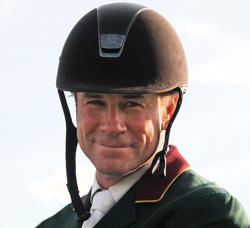The word from Peter Leone and Lionshare Farm.
The last six decades have seen our sport and how we experience it go through incredible changes. The progress we have experienced in the show-jumping, hunter, and equitation disciplines is as dramatic as the evolution we have experienced going from land-line telephones to mobile smart phones. While our equestrian progress as a country is the result of countless horsemen and women, I want to highlight two select pairs of horsemen that have unmistakably changed our sport forever.
Gordon Wright and George Morris
Gordon Wright was the founder of the forward-seat style of riding and the American system of teaching, which is one of our greatest strengths as an equestrian nation and perhaps our greatest contribution to the international riding community. Gordon taught and shared his approach to riding and jumping during the 1940s, ‘50s, and ‘60s. Busloads of enthusiastic riders of all ages would travel from New York City to spend a day in the country, riding and learning from Wright at his business, Saxon Woods, in White Plains, N.Y., later renamed Secor Farms. He remained there for some four decades.
Over the years other professional horsemen evolved to carry on his work, including Bill Steinkraus and Victor Hugo Vidal, all of them successful and talented horsemen, riders, and teachers who spread Gordon’s methodology. But one disciple of Gordon Wright surpassed them all: George H. Morris. At the age of 14, George won both junior national championships, the Maclay and the Medal Finals. In 1960, at the age of 22, George won a team silver for the United States in the Olympic Games held in Rome, Italy.
But even though George Morris was one of our country’s top riders, his real calling has been that of a teacher. George teaches Gordon Wright’s hunt-seat riding style to countless riders of all ages through his professional business and in riding clinics held all over the country. He also teaches the attention to detail and discipline that are essential to be a top-class horseman and competitor.
His years of teaching and developing a style of riding that would win Olympic and world championship gold medals for the U.S.A. resulted in our most cherished accomplishment—the American riding style! Other countries have envied the American style for decades because not only is it beautiful to watch but it also provides the most harmonious and pleasant experience for the horse. George’s contributions did not stop there. He became the coach of the U.S. Jumping Team in 2004 and stewarded our riders to countless great international successes.
Together, Gordon Wright and George Morris forged our wonderful American riding style and the American teaching system—and both are the best in the world!
Bert DeNemethy and Steve Stevens
The incredible obstacle courses our horse-and-rider combinations compete over have changed substantially over the last 50 years. Once simple tracks over massive obstacles, set relatively far away from one another, jump courses evolved to include intricately designed and easy to knock obstacles. Moreover, these obstacles are set close enough to each other that the number of strides a horse makes between them creates additional challenges.
After being the first civilian coach of the U.S. team for over 25 years, Bert DeNemethy devoted his experience and genius as a horseman to designing competition courses. It was Bert who was the first to take the challenge of show jumping from obstacles set in a simple pattern to slightly smaller jumps that were not only designed in color schemes difficult for the horse and rider to see, but set an uneven number of horse-strides apart. This forced the rider to either do several long strides between the obstacles or more short strides.
The effect is that the rider has to have impeccable control of the horse’s stride-length and balance to successfully jump big obstacles set on the half-stride. Bert put his new approach to the ultimate test when he designed the jumping courses for the 1984 Olympic Games in Los Angeles. His courses were a huge success and changed forever how competition courses were designed.
Since Bert’s extraordinary contribution to course designing, the craft has continued to evolve further in the direction he began. However, one subtle but significant change was brought to show jumping by Steve Stevens.
Like DeNemethy, Stevens was a top rider and horseman before devoting himself to designing competitions. Steve’s contribution was building obstacles that represented the area’s local culture or environment as well as corporate sponsors. Examples include the famous Seaworld obstacle with two giant Shamu whales as part of the jump, giant Budweiser bottles as obstacles, and the Mount Rushmore wall, complete with the four presidents.
Thanks to these two men, when we watch show-jumping competitions we can observe which riders have the best control of their horse’s balance and stride as they jump tricky distances over magnificent and beautifully designed obstacles.
And even better, we get to watch the beautiful American riding style over these breathtaking competition courses.

Peter Leone is an Olympic equestrian, trainer, producer of hunter/jumper instructional DVDs, and author of Peter Leone’s Jumping Clinic: Success Strategies for Equestrian Athletes. He owns and operates Lionshare Farm in Greenwich, Conn. Leone was a member of the 1996 Silver Medal United States Olympic Show-jumping Team and winner of numerous national and international grand-prix show-jumping competitions.
